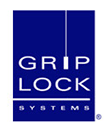Industry News
Architecture Billings Index Continues Positive Momentum
January 20, 2011
On the heels of its highest mark since 2007, the Architecture Billings Index (ABI) jumped more than two points in December. As a leading economic indicator of construction activity, the ABI reflects the approximate nine to twelve month lag time between architecture billings and construction spending. The American Institute of Architects (AIA) reported the December ABI score was 54.2, up from a reading of 52.0 the previous month. This score reflects an increase in demand for design services (any score above 50 indicates an increase in billings). The new projects inquiry index was 62.6, up slightly from a mark of 61.4 in November.
“This is more promising news that the design and construction industry is continuing to move toward a recovery,” said AIA Chief Economist, Kermit Baker, PhD, Hon. AIA. However, historically December is the most unpredictable month from a business standpoint, and therefore the most difficult month from which to interpret a trend. The coming quarter will give us a much better sense of the strength of the apparent upturn in design activity. ”
Key December ABI highlights:
-Regional averages: Northeast (55.3), South (54.8), Midwest (52.9), West (48.4)
-Sector index breakdown: multi-family residential (60.1), commercial / industrial (52.7), institutional (50.6), mixed practice (47.8)
-Project inquiries index: 62.6
About the AIA Architecture Billings Index
The Architecture Billings Index (ABI), produced by the AIA Economics & Market Research Group, is a leading economic indicator that provides an approximately nine to twelve month glimpse into the future of nonresidential construction spending activity. The diffusion indexes contained in the full report are derived from a monthly “Work-on-the-Boards” survey that is sent to a panel of AIA member-owned firms. Participants are asked whether their billings increased, decreased, or stayed the same in the month that just ended as compared to the prior month, and the results are then compiled into the ABI. These monthly results are also seasonally adjusted to allow for comparison to prior months. The monthly ABI index scores are centered around 50, with scores above 50 indicating an aggregate increase in billings, and scores below 50 indicating a decline. The regional and sector data are formulated using a three-month moving average.









































